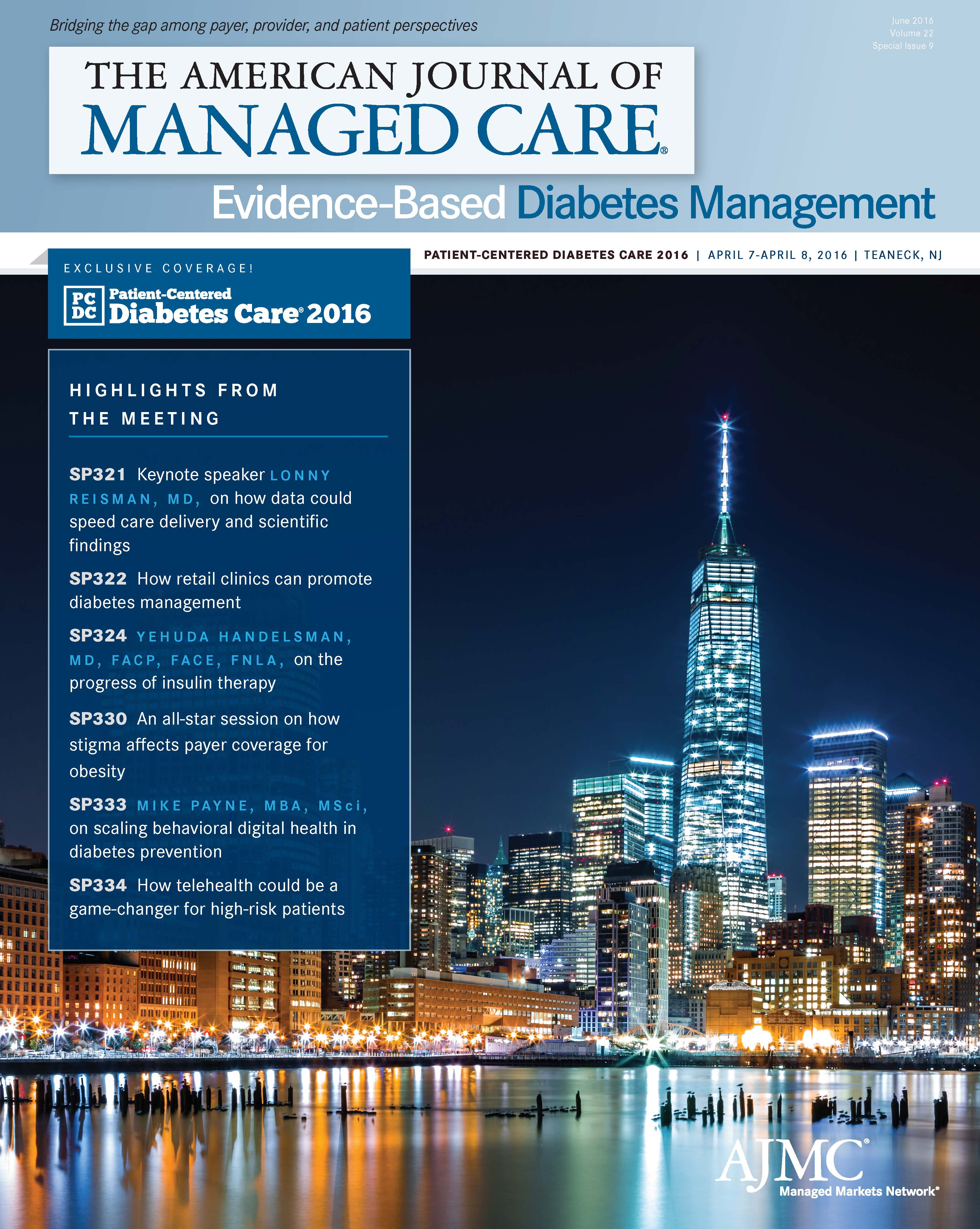- Center on Health Equity & Access
- Clinical
- Health Care Cost
- Health Care Delivery
- Insurance
- Policy
- Technology
- Value-Based Care
Handelsman Traces Progress of Insulin Management
Coverage from Patient-Centered Diabetes Care, April 7-8, 2016. Presented by The American Journal of Managed Care and Joslin Diabetes Center.
The specialized insulin formulations that keep emerging from pharmaceutical laboratories can control blood sugar far more effectively than the one-size-fits-all formulation of yesteryear. However, according to Yehuda Handelsman, MD, FACP, FACE, FNLA, patients and caregivers need to understand the ever-growing number of options.
Handelsman’s presentation, “Insulin Management: Today and Tomorrow,” part of, Patient-Centered Diabetes Care, explained what’s available today, how doctors should deploy it, and what they should look for in years to come. The immediate past president of the American College of Endocrinology, Handelsman is the medical director and principal investigator of the Metabolic Institute of America. He also has a private practice in Tarzana, California.
Pharmaceutical insulin, he said, appeared as a treatment for diabetes in the 1920s. It was the first effective treatment for either type 1 diabetes (T1D) or advanced cases of type 2 diabetes (T2D), and many wrongly thought it would effectively cure the diseases.
Insulin still cannot control either disease perfectly, Handelsman said, but its efficacy has been greatly improved by 2 breakthroughs: the use of combination therapy and the ability to tweak the hormone’s structure to change its speed of action. Today, he said, about 35% of all diabetics use insulin, with 20% of them using it in combination with some other medication and the rest using it as monotherapy. Most individuals with T1D use some form of the enzyme, as do many with advanced cases of T2D.
The American Diabetes Association (ADA) advises against using insulin, rather than an oral medication such as metformin, as an initial treatment for T2D. Some experts (although not the ADA guidelines) would also recommend against using insulin as the second or even the third drug in combination therapy, but exogenous insulin is unavoidable for patients with T2D who live long enough to lose the ability to produce their own insulin.
“Typically, we start with lifestyle management of people with diabetes. We move to a combination of oral medication, and then we go to basal insulin. From the algorithm that the [American Association of Clinical Endocrinologists] has done, what you can see here [is] that we kind of teach how to give the insulin. We can give it based on the level of A1C [glycated hemoglobin], or we can go by weight, or we can just start 10 units and see what happens,” Handelsman said.
A couple of decades ago, the standard practice was to discontinue oral therapy once patients began using insulin. Research has since shown that adding basal insulin—that is, long-acting insulin— to the oral therapy controls A1C far better than insulin alone.
Choosing the right basal insulin can be tricky, however. Handelsman noted that some long-acting insulin formulations act longer than others and some may be less likely than others to produce hypoglycemia.
“The insulin degludec that I mentioned…it’s a little bit different type of insulin than what we knew,” Handelsman said. “This is an insulin that has a 25-hour half-life, so it has a 40-hour life. It’s not good to give it every 2 or 3 days; it’s good to give it every day. It reaches [maximum concentration] by about 4 days, and then there is no stacking. So, as we give the new dose, there is a breakdown of the previous dose and the patient stays there, stable. That actually allows us to give that insulin at any time.”
Doctors can keep increasing the dose of basal insulin until it reaches 0.5 units/kg. Once a patient’s condition deteriorates enough to render that dose insufficient, however, further increases are ineffective. Doctors should instead prescribe a fast-acting insulin to take around meal times. This second type of insulin increases both the complexity and pain of treatment. It also tends to reduce patient compliance.
Handelsman had hoped the introduction of an inhalable fast-acting insulin, called Afrezza, would improve compliance and outcomes. Trial results show the medication to be faster-acting than any other current product and, quite possibly, less likely to produce hypoglycemia. That said, Handelsman believes that a poor initial marketing campaign will prevent Afrezza from having any real impact on patient care for the foreseeable future. As for treatment options that are currently under development, he is most optimistic about several artificial pancreas devices that are under development by several groups and thinks one of them may hit the market by next year.

Managed Care Reflections: A Q&A With Laurie C. Zephyrin, MD, MPH, MBA
November 12th 2025To mark the 30th anniversary of The American Journal of Managed Care, each issue in 2025 includes a special feature: reflections from a thought leader on what has changed—and what has not—over the past 3 decades and what’s next for managed care. The November issue features a conversation with Laurie C. Zephyrin, MD, MPH, MBA, senior vice president for achieving equitable outcomes at the Commonwealth Fund. This interview has been edited for length and clarity.
Read More
Exploring Pharmaceutical Innovations, Trust, and Access With CVS Health's CMO
July 11th 2024On this episode of Managed Care Cast, we're talking with the chief medical officer of CVS Health about recent pharmaceutical innovations, patient-provider relationships, and strategies to reduce drug costs.
Listen

